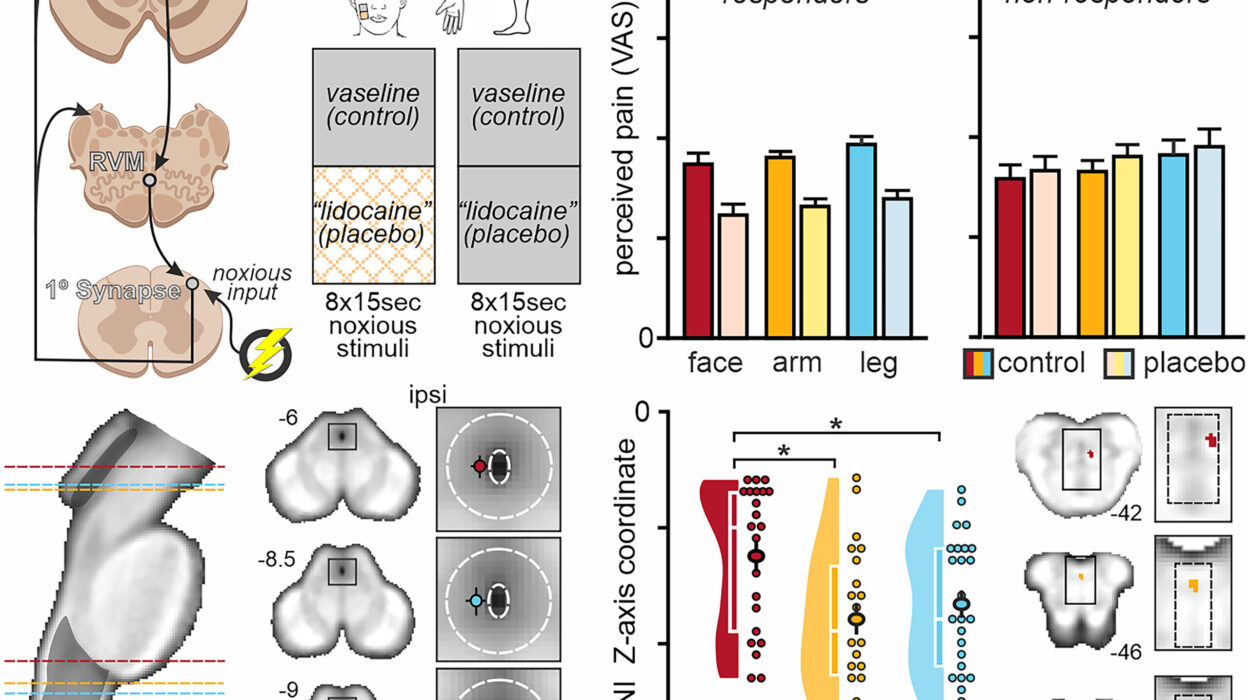Anesthesiology, the branch of medicine dedicated to the study and practice of anesthesia, is often regarded as one of the quietest yet most critical fields in healthcare. It is a discipline that underpins the success of almost every major surgery, from life-saving procedures to minor interventions, and is vital in ensuring that patients undergo these experiences with minimal distress.
Despite its crucial role, anesthesiology is often invisible to the general public. When someone is being prepped for surgery, we rarely think about the intricate science and techniques that go into managing their pain and ensuring their safety throughout the procedure. We may be more concerned with the surgeon or the procedure itself, yet without anesthesiologists, surgeries would be much more dangerous, if not impossible.
In this comprehensive exploration, we will delve into the world of anesthesiology, uncover its history, and discuss the various types of anesthesia, the science behind pain management, the role of the anesthesiologist, and the future of pain control. Along the way, we will highlight the advances that have been made in this field, which have allowed for more efficient, safer, and less painful medical procedures.
The Origins and Evolution of Anesthesiology
The history of anesthesiology is deeply intertwined with the development of surgery itself. Before the discovery of effective anesthesia, surgery was an excruciating experience. Patients were either held down while undergoing operations or rendered unconscious by crude and ineffective means, such as alcohol or opiates, both of which offered little in terms of pain relief and much in terms of risk.
The first major breakthrough in anesthesiology came in the 19th century, with the discovery of ether and nitrous oxide (laughing gas). These two substances paved the way for modern anesthetic techniques and dramatically changed the field of surgery.
Ether: The First General Anesthetic
In 1842, an American dentist named William Morton performed the first public demonstration of ether as an anesthetic. The patient, a man named Gardner Quincy Colton, underwent a dental extraction while deeply unconscious and completely unaware of the procedure. This was a turning point in the history of medicine, as it showed that patients could undergo surgery without experiencing the full brunt of pain.
Ether was not perfect—its smell was unpleasant, and it posed a risk of explosion—but it was a step toward pain-free surgery. It remained the standard anesthetic for many years, but scientists and physicians soon began searching for safer, more effective alternatives.
Nitrous Oxide: The Laughing Gas Revolution
Around the same time as the introduction of ether, nitrous oxide was also being experimented with as a potential anesthetic. Nitrous oxide, also known as laughing gas, was initially used for its recreational properties, as it induced a state of euphoria and laughter in people who inhaled it. However, it was soon realized that it could also be used as an effective anesthetic when combined with other agents.
The use of nitrous oxide as an anesthetic became widespread in the mid-1800s, especially in dental practices. It offered several advantages over ether, including its ease of administration and relatively lower risk of causing respiratory complications. Nitrous oxide, often administered with oxygen, is still widely used in dental offices today.
The Rise of Modern Anesthesia
While the discovery of ether and nitrous oxide revolutionized surgery, the science of anesthesia continued to evolve throughout the 19th and 20th centuries. In the late 19th century, chloroform, a chemical similar to ether, was introduced as an alternative general anesthetic. It was more potent than ether and could induce unconsciousness with a lower volume, but it also carried risks of cardiac toxicity.
In the 20th century, scientists began developing more sophisticated anesthetic agents, including halothane, isoflurane, and sevoflurane, which allowed for greater control over anesthesia depth and fewer side effects. The development of muscle relaxants, such as curare and succinylcholine, also revolutionized anesthesia by allowing for better muscle control during surgery.
Today, anesthesiologists have a wide array of medications and techniques at their disposal, which are tailored to each patient and each surgical procedure. These include general anesthesia, regional anesthesia (such as epidurals and spinal blocks), and local anesthesia, all of which play an essential role in modern medicine.
The Science of Anesthesia: How It Works
Anesthesia is a complex and multifaceted field that involves far more than simply making a patient “sleep” during surgery. Understanding how anesthetics work requires a knowledge of physiology, pharmacology, and the intricate workings of the nervous system.
At its core, anesthesia works by altering the brain’s perception of pain, and sometimes the brain’s consciousness itself. The process involves a delicate balance between ensuring that the patient is deeply unconscious and pain-free while maintaining their vital functions, such as breathing, circulation, and blood pressure.
General Anesthesia: The Complete Shutdown
General anesthesia involves rendering the patient unconscious and unaware of their surroundings. This type of anesthesia is typically used for major surgeries, such as heart surgery, brain surgery, or joint replacements, where it is necessary to ensure that the patient does not move or feel anything.
When a patient is given general anesthesia, it works by interfering with the brain’s neurotransmitters, particularly those involved in the transmission of pain signals and the maintenance of consciousness. Medications such as propofol, etomidate, and thiopental are commonly used to induce and maintain general anesthesia. These drugs have the ability to bind to receptors in the brain, inhibiting neural activity and preventing the brain from processing sensory input.
In addition to the agents that induce unconsciousness, anesthesiologists also use muscle relaxants to prevent the patient from moving during surgery. These relaxants block the transmission of nerve impulses to muscles, allowing the surgeon to perform procedures without interference.
Monitoring is critical during general anesthesia. An anesthesiologist will continuously monitor the patient’s vital signs—heart rate, blood pressure, oxygen levels, and carbon dioxide levels—to ensure that the patient remains stable. Adjustments are made to the anesthetic drugs as necessary, as even small changes in the patient’s condition can have significant effects during surgery.
Regional Anesthesia: Targeting Specific Areas
In some cases, instead of rendering the entire body unconscious, anesthesiologists will administer regional anesthesia, which numbs a specific region of the body while the patient remains awake or sedated. This technique is commonly used for procedures such as cesarean sections, joint replacements, and certain types of abdominal surgery.
There are two primary types of regional anesthesia: epidural anesthesia and spinal anesthesia. Both of these methods involve injecting an anesthetic agent into the spinal cord area to block pain transmission from a specific region of the body.
- Epidural anesthesia: This technique involves placing an anesthetic agent into the epidural space around the spinal cord. It is often used during labor and childbirth and for surgeries in the lower abdomen, pelvis, or legs. Epidural anesthesia provides continuous pain relief while allowing the patient to remain conscious and alert.
- Spinal anesthesia: In contrast, spinal anesthesia involves injecting anesthetic directly into the cerebrospinal fluid surrounding the spinal cord. This results in a deeper and more profound numbing effect. It is often used for surgeries on the lower limbs, pelvis, or abdomen.
Regional anesthesia is generally considered safer than general anesthesia in certain patients, as it carries fewer risks related to breathing and cardiovascular stability. However, it is not appropriate for all types of surgeries, particularly those that require the patient to be unconscious or immobile for extended periods.
Local Anesthesia: Targeting Small Areas
Local anesthesia is the most commonly used form of anesthesia and is often employed for minor surgeries or medical procedures, such as dental work, skin biopsies, or the stitching of small wounds. Local anesthetics, such as lidocaine, work by blocking the transmission of pain signals along the nerves in the area being treated.
The beauty of local anesthesia lies in its simplicity and minimal risk. It allows patients to remain awake and aware during their procedures, while ensuring they feel no pain. Local anesthetics are typically injected directly into the tissue or applied as creams or gels.
While local anesthesia is generally safe, it can still have side effects, such as allergic reactions or, in rare cases, systemic toxicity if too much of the drug is absorbed into the bloodstream.
The Role of the Anesthesiologist: More Than Just “Putting You to Sleep”
Anesthesiologists are highly trained physicians who specialize in the science and practice of anesthesia. Their role extends far beyond simply administering anesthetic drugs—they are responsible for overseeing the patient’s care before, during, and after surgery to ensure that everything goes smoothly and safely.
Preoperative Care
Before any procedure requiring anesthesia, the anesthesiologist conducts a thorough assessment of the patient’s health. This includes reviewing the patient’s medical history, current medications, allergies, and previous experiences with anesthesia. Special attention is paid to any preexisting conditions such as heart disease, diabetes, or respiratory issues, as these can impact how the patient responds to anesthesia.
The anesthesiologist also discusses the patient’s preferences and concerns, explaining the type of anesthesia that will be used and any potential risks involved. In some cases, the anesthesiologist may recommend specific tests, such as blood work or an electrocardiogram (ECG), to further evaluate the patient’s suitability for anesthesia.
Intraoperative Care
Once the patient is in the operating room, the anesthesiologist is responsible for monitoring and managing the patient’s anesthesia throughout the surgery. They continuously assess the patient’s vital signs and adjust the anesthetic drugs to maintain the appropriate level of sedation, pain control, and muscle relaxation.
The anesthesiologist also works closely with the surgical team, providing feedback on the patient’s condition and ensuring that they remain stable during the procedure.
Postoperative Care
After the surgery is complete, the anesthesiologist continues to monitor the patient as they recover from anesthesia. This stage, known as the postoperative period, involves ensuring that the patient regains consciousness smoothly and safely, without experiencing any complications such as nausea, vomiting, or respiratory difficulties.
The anesthesiologist may administer medications to manage pain or help the patient wake up more quickly from anesthesia. In some cases, they may also provide support for ongoing pain management if the patient has had a major surgery.
The Future of Pain Management: New Frontiers in Anesthesiology
As our understanding of pain and anesthesia continues to evolve, so too do the methods and technologies available to anesthesiologists. The future of anesthesiology looks bright, with several exciting advancements on the horizon.
Personalized Anesthesia
As we learn more about individual differences in genetics and how they affect our response to drugs, personalized anesthesia is becoming an area of focus. In the future, anesthesiologists may be able to tailor anesthetic plans to each patient based on their genetic profile, ensuring that the drugs used are the most effective and have the fewest side effects.
Pain Management Technologies
Advances in pain management technologies, such as nerve stimulation and implantable pain devices, offer new possibilities for patients with chronic pain or those recovering from surgery. These technologies are designed to provide targeted, long-lasting pain relief with fewer side effects than traditional medications.
Regional Anesthesia for More Complex Surgeries
The use of regional anesthesia is expected to expand as more surgeons recognize its benefits, especially for patients who may be at higher risk for complications from general anesthesia. Techniques such as nerve blocks and ultrasound-guided injections are making regional anesthesia more effective and accessible for a wider range of surgical procedures.
Virtual Reality and Simulation Training
As anesthesiologists continue to face increasingly complex cases, simulation training using virtual reality (VR) may become a key tool in preparing physicians for rare or high-risk scenarios. These cutting-edge technologies could help anesthesiologists practice and perfect their skills in a controlled, risk-free environment before working with real patients.
Conclusion: Anesthesiology—A Cornerstone of Modern Medicine
Anesthesiology is often called the “silent” or “unsung” specialty in medicine because its contributions, while essential, often go unnoticed by the public. However, without anesthesiologists, surgery as we know it today would be unimaginable. These dedicated professionals ensure that patients can undergo even the most complex surgeries without fear or pain, and they are constantly working behind the scenes to improve patient outcomes.
As medicine continues to advance, anesthesiology will remain a vital part of healthcare, evolving alongside new technologies and discoveries. Whether through the development of personalized anesthesia, the integration of innovative pain management devices, or the refinement of existing techniques, the future of anesthesiology is full of promise.
The next time you or a loved one undergoes a procedure, take a moment to appreciate the complex and fascinating science of anesthesiology—an essential field that ensures you remain pain-free and safe during some of life’s most critical moments.






